The world of electronics is vast, with a growing array of devices that enhance our daily lives. From televisions and sound systems to smart home devices, the complexity of managing multiple remotes for each can be overwhelming. This is where universal remote controls step in, offering a streamlined solution to manage multiple devices with a single controller. But are universal remote controls really worth the investment?
Category: Remote Controls
Reviews of remote controls.
Tips for Choosing the Best Replacement Remote for Your Needs
Whether your original remote is lost, damaged, or simply worn out, finding the right replacement can be a daunting task. In today’s digital age, where almost every device from your TV to your air conditioner relies on remote controls, being without one can disrupt your daily routine and leave you frustrated. With so many options available on the market—ranging from simple replacements to advanced multi-device controllers—it’s easy to feel overwhelmed by the sheer variety.
We will walk you through essential tips and considerations to help you choose the best replacement remote that perfectly suits your needs, ensuring you regain control and enjoy a seamless, hassle-free experience with your devices.
Understand Your Device Requirements
Before purchasing a replacement remote, it’s crucial to understand the specific requirements of your device. Remotes are designed to work with specific brands and models, and choosing the wrong one could leave you with an incompatible device. Here’s what you need to consider:
Identify Your Device Brand and Model
Start by identifying the brand and model of the device you need a remote for. Most devices, such as TVs, DVD players, and sound systems, have the model number printed on the back or within the user manual. This information is key to ensuring you purchase a remote that’s compatible.
Consider Multi-Device Compatibility
If you have multiple devices from different brands, consider opting for a universal remote. Universal remotes are designed to work with various devices and can often be programmed to control several gadgets at once. However, ensure that the universal remote supports all the devices you intend to control.
Decide Between OEM and Universal Remotes
When shopping for a replacement remote, you’ll encounter two main types: Original Equipment Manufacturer (OEM) remotes and universal remotes. Each has its pros and cons.
OEM Remotes
OEM remotes are designed by the original manufacturer specifically for your device. They often have the same layout, features, and feel as your original remote, making them a seamless replacement. If you value consistency and ease of use, OEM remotes might be the best choice.
Universal Remotes
Universal remotes offer more flexibility and can control multiple devices from different brands. They’re ideal if you want to reduce remote clutter or control an entertainment system with a single device. However, setting up a universal remote can be more complex, and not all features may work seamlessly with your device.
Evaluate Key Features
Not all remotes are created equal. Some come with additional features that can enhance your user experience. When selecting a replacement remote, consider the following features:
Backlighting
A backlit remote can be incredibly convenient, especially for use in dimly lit rooms. This feature ensures that you can easily see the buttons, even in the dark.
Programmable Buttons
Programmable buttons allow you to customize the remote to your preferences. For example, you can set up shortcuts to your favorite channels or control multiple devices with a single button press.
Battery Life
Battery life is another important factor to consider. Some remotes are more energy-efficient than others, meaning you won’t have to replace the batteries as often. Look for remotes that offer extended battery life or come with rechargeable options.
Check for Compatibility and Ease of Setup
Before finalizing your purchase, ensure the remote is easy to set up and compatible with your device. This can save you from the hassle of returns and exchanges.
Read Product Descriptions Carefully
Always read the product descriptions and specifications carefully to ensure the remote is compatible with your device. Pay attention to details like supported brands, model numbers, and features.
Look for Setup Instructions
A good replacement remote should come with clear setup instructions. Some remotes require manual programming, while others are pre-programmed and ready to use right out of the box. Ensure you’re comfortable with the setup process before making a purchase.
Consider Customer Reviews and Ratings
One of the best ways to gauge the quality of a replacement remote is by reading customer reviews and ratings. Reviews can provide valuable insights into the remote’s performance, durability, and ease of use.
Positive Feedback
Look for remotes with a high number of positive reviews. Consistent praise for ease of use, compatibility, and quality is a good indicator of a reliable product.
Watch for Common Complaints
On the flip side, pay attention to common complaints in the reviews. If multiple customers mention issues like poor battery life, difficult setup, or incompatibility, it might be worth considering other options.
Shop from Reputable Retailers
Where you purchase your replacement remote is just as important as the remote itself. Shopping from reputable retailers ensures you get a genuine product and reliable customer support.
Authorized Dealers
Consider purchasing from authorized dealers who sell genuine OEM and universal remotes. This reduces the risk of buying counterfeit or substandard products.
Warranty and Return Policy
Check the retailer’s warranty and return policy before making a purchase. A solid warranty can give you peace of mind, knowing that you can return or exchange the remote if it doesn’t meet your expectations.
Choosing the Best Remote for Your Needs
Selecting the right replacement remote doesn’t have to be a daunting task. By understanding your device’s requirements, evaluating key features, and considering customer reviews, you can find a remote that meets your needs and enhances your user experience. Ready to find the perfect replacement remote? Explore our wide selection of high-quality OEM and universal remotes at Anderic. With our easy-to-use online store, you can find the ideal remote for your device and enjoy seamless control once again.
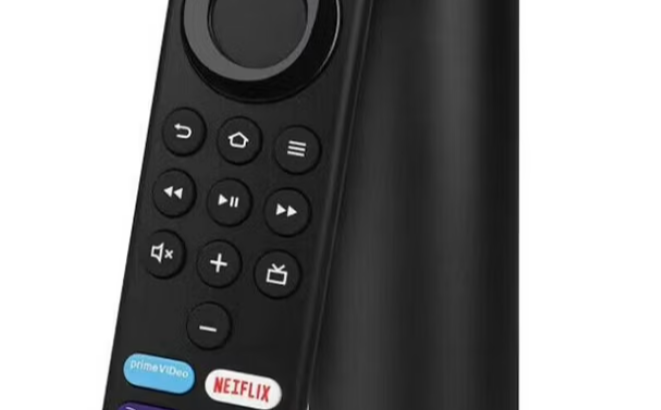
The Best Remote Controls for Streaming Devices: Enhance Your Viewing Experience
Streaming devices have transformed how we consume entertainment, offering access to endless content at our fingertips. But to fully enjoy this experience, you need the right tools—and that starts with the perfect remote control. The right remote can make navigating your favorite streaming platforms smooth, efficient, and enjoyable.
Let’s explore the best remote controls for streaming devices and how they can elevate your viewing experience.
Why the Right Remote Matters
Seamless Navigation
When it comes to streaming, ease of navigation is key. A good remote allows you to effortlessly scroll through menus, switch between apps, and find your desired content without frustration. The right remote will have intuitive buttons, a comfortable design, and quick response times, making your viewing experience much more enjoyable.
Enhanced Functionality
Today’s remote controls do more than just change channels or adjust the volume. Many are equipped with voice control, shortcut buttons for popular streaming services, and even universal control capabilities for multiple devices. These features can greatly enhance your streaming experience, providing you with more control over your entertainment setup.
User Comfort
Comfort is often overlooked but is a critical aspect of a good remote. A remote that fits comfortably in your hand, with buttons that are easy to press and well-spaced, can significantly improve your experience. It reduces the strain of prolonged use and makes your time in front of the TV more relaxing.
Top Remote Controls for Streaming Devices
1. Roku Voice Remote Pro
The Roku Voice Remote Pro is a top choice for Roku streaming device users. It offers voice control, which allows you to search for content, launch apps, and control playback with just your voice. This remote also includes personal shortcut buttons that can be programmed for your favorite channels or actions. Additionally, it’s rechargeable, so you won’t need to worry about replacing batteries frequently.
Key Features:
- Voice Control: Search and control with your voice.
- Rechargeable: No need for disposable batteries.
- Programmable Buttons: Set shortcuts for easy access to your favorite content.
2. Amazon Fire TV Stick 4K Remote
The Amazon Fire TV Stick 4K remote is another excellent option, especially for users of Amazon’s streaming devices. This remote features Alexa voice control, allowing you to search for shows, play music, and even control smart home devices with your voice. It also includes dedicated buttons for popular streaming services like Netflix, Hulu, and Prime Video, giving you quick access to your favorite content.
Key Features:
- Alexa Voice Control: Hands-free searching and control.
- Dedicated Streaming Buttons: Instant access to popular services.
- Smart Home Integration: Control other smart devices in your home.
3. Apple TV Remote (Siri Remote)
For Apple TV users, the Siri Remote is the ideal companion. It’s designed with a touch-sensitive surface that makes scrolling through content fast and precise. Voice control via Siri allows you to search for shows, adjust settings, and even ask for recommendations. The remote is sleek, minimalistic, and provides an intuitive user experience.
Key Features:
- Touch Surface: Smooth and precise navigation.
- Siri Integration: Voice control for searching and commands.
- Minimalist Design: Sleek, user-friendly design that’s easy to use.
4. Google Chromecast Remote
The Google Chromecast remote is perfect for those using Chromecast with Google TV. It’s compact, easy to use, and features Google Assistant for voice control. The remote includes dedicated buttons for popular streaming services, and its minimalist design fits comfortably in your hand. With this remote, you can also control your TV’s power and volume, eliminating the need for multiple remotes.
Key Features:
- Google Assistant: Voice search and commands.
- Compact Design: Comfortable and easy to hold.
- TV Control: Power and volume control built-in.
5. Logitech Harmony Elite
For those who want the ultimate remote control experience, the Logitech Harmony Elite is hard to beat. This universal remote can control up to 15 devices, including streaming devices, TVs, gaming consoles, and even smart home products. It features a full-color touch screen, customizable buttons, and voice control via Alexa. While it’s a more premium option, the Harmony Elite is perfect for those who want complete control over their entire home entertainment system.
Key Features:
- Universal Control: Manage up to 15 devices.
- Touch Screen: Easy access to apps and settings.
- Voice Control: Alexa integration for voice commands.
- Customizable Buttons: Personalize your remote to suit your needs.
How to Choose the Right Remote for Your Streaming Device
Consider Compatibility
Before purchasing a remote, ensure it’s compatible with your streaming device. Some remotes are designed specifically for certain brands, like Roku or Apple TV, while others, like the Logitech Harmony Elite, offer universal compatibility. Checking compatibility ensures that you’ll be able to use all the features of your remote with your streaming device.
Think About Your Viewing Habits
Your viewing habits should play a role in your decision. If you frequently use voice search, a remote with robust voice control features, like the Roku Voice Remote Pro or the Amazon Fire TV Stick remote, would be ideal. If you prefer a more tactile experience, the Apple TV remote’s touch surface might appeal to you.
Budget Considerations
While it might be tempting to go for the most feature-packed remote, it’s important to consider your budget. Basic remotes like those that come with most streaming devices are often sufficient for everyday use. However, if you’re looking for something more advanced, investing in a premium option like the Logitech Harmony Elite could be worth it.
The Right Remote Control
The right remote control can make a world of difference in your streaming experience. Whether you prioritize voice control, universal compatibility, or a sleek design, there’s a remote out there that can enhance your viewing experience. Explore our range of replacement remotes to find the perfect fit for your streaming device and take your home entertainment to the next level.
Don’t settle for a subpar viewing experience. Upgrade your remote today and enjoy seamless control over your favorite streaming services.
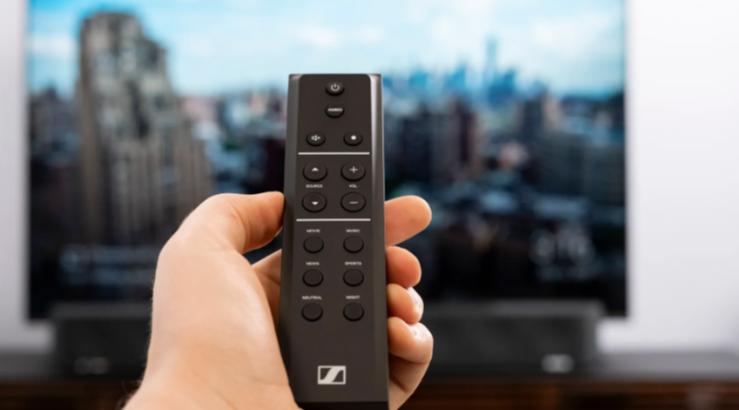
The Ultimate Guide to Sound Bars and Their Remotes
Sound bars have revolutionized home entertainment by providing a superior audio experience without the clutter of traditional surround sound systems. With sleek designs and powerful sound output, they are a popular choice for many households. However, navigating the plethora of sound bar remotes can be a challenge. Let’s explore the key features of sound bars and the importance of having the right remote control for them.
Why Choose a Sound Bar?
Sound bars offer an enhanced audio experience, delivering clear and powerful sound that can significantly improve your TV viewing experience. Their compact design makes them a perfect fit for any living room setup, unlike traditional speaker systems that can be bulky and intrusive.
Most sound bars are easy to set up, requiring minimal wiring and effort. This simplicity adds to their appeal, making them an ideal choice for both tech-savvy users and those who prefer straightforward installations.
Common Features of Sound Bars
- Built-in Subwoofers: Many sound bars come with built-in subwoofers that provide deep bass, eliminating the need for additional speakers.
- Bluetooth Connectivity: Bluetooth-enabled sound bars allow you to stream music directly from your smartphone or tablet.
- Voice Control: Some advanced sound bars come with voice control features, allowing you to control the device using voice commands.
- HDMI ARC: HDMI Audio Return Channel (ARC) simplifies connectivity and control by allowing audio to travel both ways between the TV and sound bar.
The Importance of the Right Remote Control
A well-designed remote control simplifies the operation of your sound bar, allowing you to easily adjust volume, change settings, and switch inputs. Sound bar remotes often provide access to advanced features like sound modes, Bluetooth pairing, and voice control. Having a dedicated remote control for your sound bar enhances convenience and comfort, especially when the remote is designed to be ergonomic and user-friendly.
Types of Sound Bar Remotes
- Original Equipment Manufacturer (OEM) Remotes: Specifically designed for your sound bar model, ensuring full compatibility and access to all features.
- Universal Remotes: Can be programmed to work with various devices, including your sound bar, TV, and other home entertainment equipment.
- Smart Remotes: Offer advanced features like voice control, touch screens, and integration with smart home systems.
How to Pair a Replacement Remote with Your Sound Bar
- Check Compatibility: Ensure that the replacement remote is compatible with your sound bar model.
- Insert Batteries: Insert fresh batteries into the replacement remote.
- Follow Pairing Instructions: Use the pairing instructions provided with the replacement remote. This typically involves pressing certain buttons in a specific sequence.
- Test the Remote: Test the remote by adjusting the volume, changing sound modes, and switching inputs to ensure it is working correctly.
Troubleshooting Common Remote Control Issues
Unresponsive Remote
- Check Batteries: Replace the batteries if the remote is unresponsive.
- Reset the Remote: Follow the reset instructions provided in the remote’s manual.
- Check for Obstructions: Ensure there are no obstructions between the remote and the sound bar.
Limited Functionality
- Reprogram the Remote: If the remote is not performing all functions, try reprogramming it.
- Update Firmware: Check if there is a firmware update available for your sound bar.
The Right Remote
Choosing the right remote control for your sound bar is crucial for enjoying the full potential of your home entertainment system. Whether you opt for an OEM remote, a universal remote, or a smart remote, ensure it meets your needs and enhances your overall experience. Ready to upgrade your sound bar experience? Explore our range of sound bar remotes here and find the perfect remote for your needs!
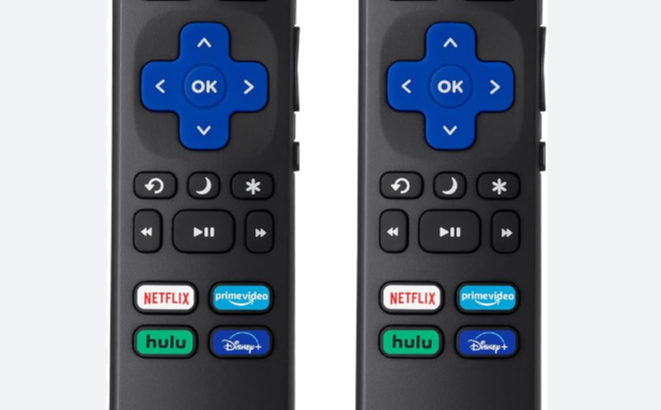
The Benefits of Having Spare Remotes: Never Be Without Control
As technology advances and our homes become more connected, remote controls have become essential to managing our devices. Whether it’s your TV, sound system, or air conditioner, these small devices grant us easy access to the comfort and entertainment we enjoy daily.
But what happens when a remote goes missing or stops working? Suddenly, something as simple as changing the channel or adjusting the temperature becomes a hassle. That’s why having spare remotes on hand is not just a convenience but a necessity.
Why Spare Remotes Are Essential
Convenience and Peace of Mind
Imagine sitting down to watch your favorite show after a long day, only to find your remote missing. It’s frustrating, right? With a spare remote, you’ll never have to worry about this scenario. Spare remotes offer the convenience of always having a backup, so you can immediately take control without interrupting your plans. This simple precaution ensures that even if one remote is lost or broken, you can continue enjoying your devices without skipping a beat.
Time-Saving Solution
Searching for a lost remote can take up more time than you’d like to admit. In a world where time is precious, having a spare remote can save you from wasting minutes (or even hours) hunting through couch cushions, under furniture, or in other unexpected places. With a spare on hand, you can focus on what matters most—whether that’s relaxing, entertaining guests, or catching up on the latest news.
Cost-Effective in the Long Run
While purchasing a spare remote might seem like an additional expense, it’s a cost-effective decision in the long run. Think about it—if your original remote breaks and you don’t have a spare, you may rush to buy a replacement, possibly paying a premium for expedited shipping or picking up a less-than-ideal model out of desperation. Having a spare remote eliminates this urgency, giving you the flexibility to find the best replacement option at a reasonable price.
Practical Scenarios for Spare Remotes
Multi-Device Households
In homes where multiple devices are controlled by remotes, the need for spares becomes even more apparent. With several TVs, sound systems, or smart devices, a lost remote can cause disruption across the entire household. Spare remotes ensure that every family member can access the devices they need without conflicts or delays.
Children and Remote Controls
Families with children know all too well how easily remotes can be misplaced. Kids often use remotes for gaming consoles or streaming devices, and these small gadgets can quickly get lost in the shuffle. A spare remote is a practical solution that allows parents to maintain control even when the primary remote is nowhere to be found.
Elderly and Remote Dependence
For elderly family members who may rely heavily on remote controls to operate their TVs, heating systems, or medical alert devices, losing a remote can be more than just an inconvenience—it can affect their daily routine and comfort. Having a spare remote readily available ensures they can continue their day without stress or the need for immediate assistance.
Benefits Beyond Convenience
Reduced Wear and Tear
Regular use of a single remote control can lead to wear and tear over time. Buttons may become less responsive, and the remote itself might show signs of aging. By rotating between your original remote and a spare, you can extend the lifespan of both devices, ensuring they remain in good working condition for longer.
Guest-Friendly Solutions
When hosting guests, it’s common for them to struggle with unfamiliar technology, especially when it comes to operating your entertainment system. Having a spare remote on hand makes it easy to provide them with their own control device, allowing them to adjust settings without needing to ask for help constantly. This small gesture enhances their comfort and makes their stay more enjoyable.
Prepared for Emergencies
In case of an emergency where quick access to your devices is critical, having a spare remote can be a lifesaver. Whether you need to quickly mute the TV during an important phone call or make adjustments when the power is restored, your spare remote ensures that you’re always prepared, no matter the situation.
Choosing the Right Spare Remote
Compatibility Matters
When selecting a spare remote, it’s important to ensure compatibility with your devices. Not all remotes work with all systems, so take the time to verify that your spare will function with your TV, sound bar, or other electronics. Universal remotes are a popular choice for this reason, as they can be programmed to work with multiple devices, providing a versatile solution.
Original vs. Universal Remotes
While original equipment manufacturer (OEM) remotes are designed specifically for your device model, universal remotes offer greater flexibility. Universal remotes can control multiple devices with a single unit, making them ideal for households with diverse technology setups. However, OEM remotes are often easier to use and provide access to all the features of your device, so the choice depends on your specific needs and preferences.
Where to Store Spare Remotes
It’s one thing to have a spare remote, but it’s another to keep it in a place where it’s easily accessible. Designate a specific spot in your living room, kitchen, or bedroom where you’ll store your spare remotes. Consider placing them in a drawer, on a shelf, or even in a decorative box that’s both functional and visually appealing. This ensures that when you need the spare, you won’t have to search for it.
Our Favorite Devices
In today’s tech-savvy world, remote controls are indispensable tools that give us easy access to our favorite devices. The benefits of having spare remotes go beyond mere convenience—they provide peace of mind, save time, reduce costs, and prepare you for unexpected situations. Whether you live in a multi-device household, have children or elderly family members, or simply value being prepared, spare remotes are a smart investment.
Don’t wait until your remote is lost or broken to consider a backup. Explore our wide selection of replacement remotes today and ensure you’re always in control, no matter what.
The Role of Remote Controls in Enhancing Home Theater Experiences
In the realm of home entertainment, the home theater system stands as a beacon of immersive viewing experiences, akin to bringing the cinema into the living room. Central to this setup’s functionality and ease of use is a device that might seem unassuming at first glance but is indeed pivotal—the remote control. This device has undergone significant transformations over the years, each innovation aimed at further enriching the user’s interaction with their entertainment system.
The Heart of Convenience
The integration of remote controls into home theater systems has revolutionized user interaction, bringing unprecedented convenience. The need to manually adjust settings or switch between devices is a thing of the past. With a remote, control is quite literally at your fingertips, allowing for a seamless and uninterrupted viewing experience.
The modern remote control consolidates the functionality of multiple devices into one, streamlining operations and enhancing the user experience by providing a single point of control for the entire home theater setup. This level of convenience is not merely about reducing physical effort; it’s about enriching the viewing experience by making it smoother and more enjoyable.
Advanced Features and Functionality
The technological evolution of remote controls has endowed them with features that significantly enhance the interaction with home theater systems. Voice commands allow for hands-free operation, adding a layer of convenience and accessibility. Touch screens and programmable buttons offer personalized control, making it easier to navigate and access favorite functions quickly. These advancements in remote control technology not only make the user experience more intuitive but also add a touch of modernity to the home theater setup.
Universal Remote Controls: A Game Changer
The development of universal remote controls represents a significant leap forward in the management of home entertainment systems. These devices consolidate the functions of multiple remotes into one, offering a solution to the clutter and complexity of using different remotes for different devices. Universal remotes simplify the operation of home theaters, making it easier and more intuitive to control various components of the system, regardless of brand or model. This innovation has greatly enhanced the usability of home theaters, making them more accessible and enjoyable for users.
Customization and Personalization
Remote controls now offer features for customization and personalization, further enhancing the home theater experience. Programmable buttons can be set up for quick access to favorite channels or settings, allowing for a more personalized interaction with the system. Advanced remotes that support user profiles enable each user to have a tailored experience, with their preferences and settings saved and easily accessible. This level of personalization not only improves the functionality of remote controls but also makes the viewing experience more enjoyable and suited to individual preferences.
Enhancing the Aesthetic Appeal
The design and aesthetics of remote controls have evolved to complement the modern home theater setup. Ergonomic designs ensure comfort during extended use, while backlit buttons add a functional elegance, making it easy to control the system even in low-light conditions. The visual appeal of a well-designed remote enhances the overall experience, contributing to the sophisticated ambiance of the home entertainment environment.
Future Trends in Remote Control Technology
The horizon of remote control technology is brimming with potential advancements that promise to further revolutionize our interaction with home theater systems. Innovations such as gesture control could introduce a new level of intuitive operation, allowing for seamless adjustments with simple hand movements.
The integration of remote controls with smart home devices is another exciting possibility, offering centralized control over the entire home environment. These future developments in remote control technology are set to make the home theater experience even more immersive and user-friendly.
Remote controls have become an indispensable part of the home theater experience, offering not just a means of control but a gateway to a more immersive and personalized entertainment environment. Their evolution from basic channel changers to advanced, feature-rich devices underscores their significance in the modern home theater setup. As technology continues to advance, we can look forward to even more innovative features that will make our interactions with home entertainment systems more intuitive and enjoyable.
At Replacement Remotes, we specialize in providing a wide range of high-quality, compatible remote controls for various home theater systems. Our expertise ensures that you find the perfect remote to enhance your viewing experience, whether you’re in search of an advanced universal remote or a replacement for your original device. Explore our collection and take a step toward upgrading your home theater experience.
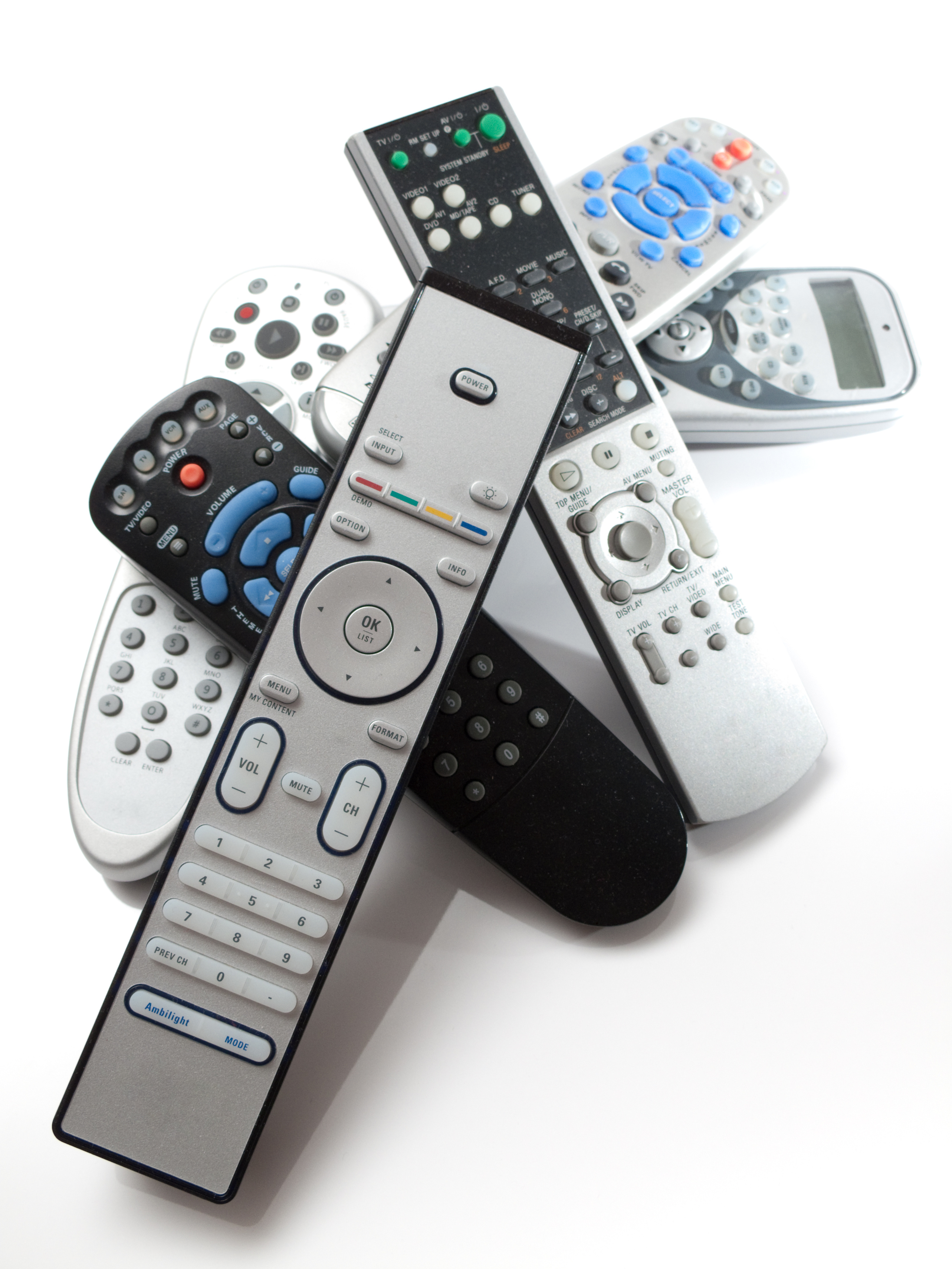
3 Tips for Maintaining Your Remote Controls for Longevity
In a world increasingly governed by technology, remote controls have become indispensable tools in our daily lives. They bridge the gap between us and our devices, offering convenience and efficiency. However, their continuous use also subjects them to wear and tear. Maintaining your remote controls is not just about prolonging their lifespan; it’s about ensuring uninterrupted access to your favorite devices and appliances.
Regular Cleaning and Care
Regular cleaning and care are crucial for maintaining the functionality and longevity of your remote controls. Over time, dust and grime accumulate on the remote, which can interfere with its signal and button functionality. By regularly cleaning your remote, you can prevent this build-up, ensuring that it continues to operate smoothly. This maintenance step is simple but plays a significant role in preserving the effectiveness and responsiveness of your remote controls.
Turn Off and Remove Batteries: Always start by turning off the remote and removing the batteries to prevent damage.
Use a Soft, Dry Cloth: Gently wipe the surface of the remote to remove dust.
Cotton Swabs and Alcohol: For tougher grime around buttons, lightly moisten a cotton swab with rubbing alcohol and carefully clean around the buttons.
Dry Thoroughly: Ensure the remote is completely dry before replacing the batteries.
Clean the inside: Opening the remote and cleaning the backside of the keypad and the circuit board will help the keys function correctly. We have a step-by-step tutorial on how to do this at https://www.replacementremotes.com/generic/buy-fix-the-keys-on-any-remote-control-keypad-repair-kit-keypadrepkit.
Additional Tips:
- Avoid using excessive liquid or abrasive cleaners.
- Regularly clean the battery compartment to prevent corrosion.
Battery Maintenance and Replacement
Battery maintenance is a critical aspect of remote control care. The longevity and functionality of your remote largely depend on the condition of its batteries. It’s important to regularly check and replace them to avoid issues like leakage and corrosion, which can irreparably damage the remote. Choosing high-quality batteries and avoiding the mixing of different types or ages of batteries are also key practices. If you encounter minor corrosion, gently cleaning the contacts can help, but always handle leaking batteries with care and dispose of them safely.
Proper Usage and Handling
The way you handle your remote control can significantly affect its lifespan. These devices are designed for gentle use; rough handling, such as dropping or pressing buttons too hard, can harm their internal components. Protecting your remote with a case can prevent damage from accidental drops, and keeping it away from liquids is crucial to avoid internal damage. Additionally, storing your remote in a cool, dry place away from direct sunlight helps to preserve its integrity and functionality.
Using Protective Cases for Remote Controls
Adding a protective case to your remote control is an effective way to extend its lifespan. These cases, available in materials like soft silicone or hard plastic, provide a barrier against physical damage. They are particularly useful in cushioning the impact in case of accidental drops, which are among the common causes of internal damage to remotes.
Beyond protection from falls, these cases also help safeguard the remote from scratches, dust, and potential spills, keeping it in optimal condition for longer. For households with children or pets, or in high-traffic areas like living rooms, using a protective case can be a simple yet crucial step in preserving your remote control’s functionality and appearance.
Maintaining your remote controls doesn’t require much effort, but it makes a significant difference in their performance and lifespan. Regular cleaning, proper battery care, and gentle handling are key. By following these tips, you ensure that your remote controls remain reliable companions in your daily life.
For more maintenance tips, replacement parts, or if you’re in need of a new remote control, check out Replacement Remotes, your one-stop shop for all your remote control needs.
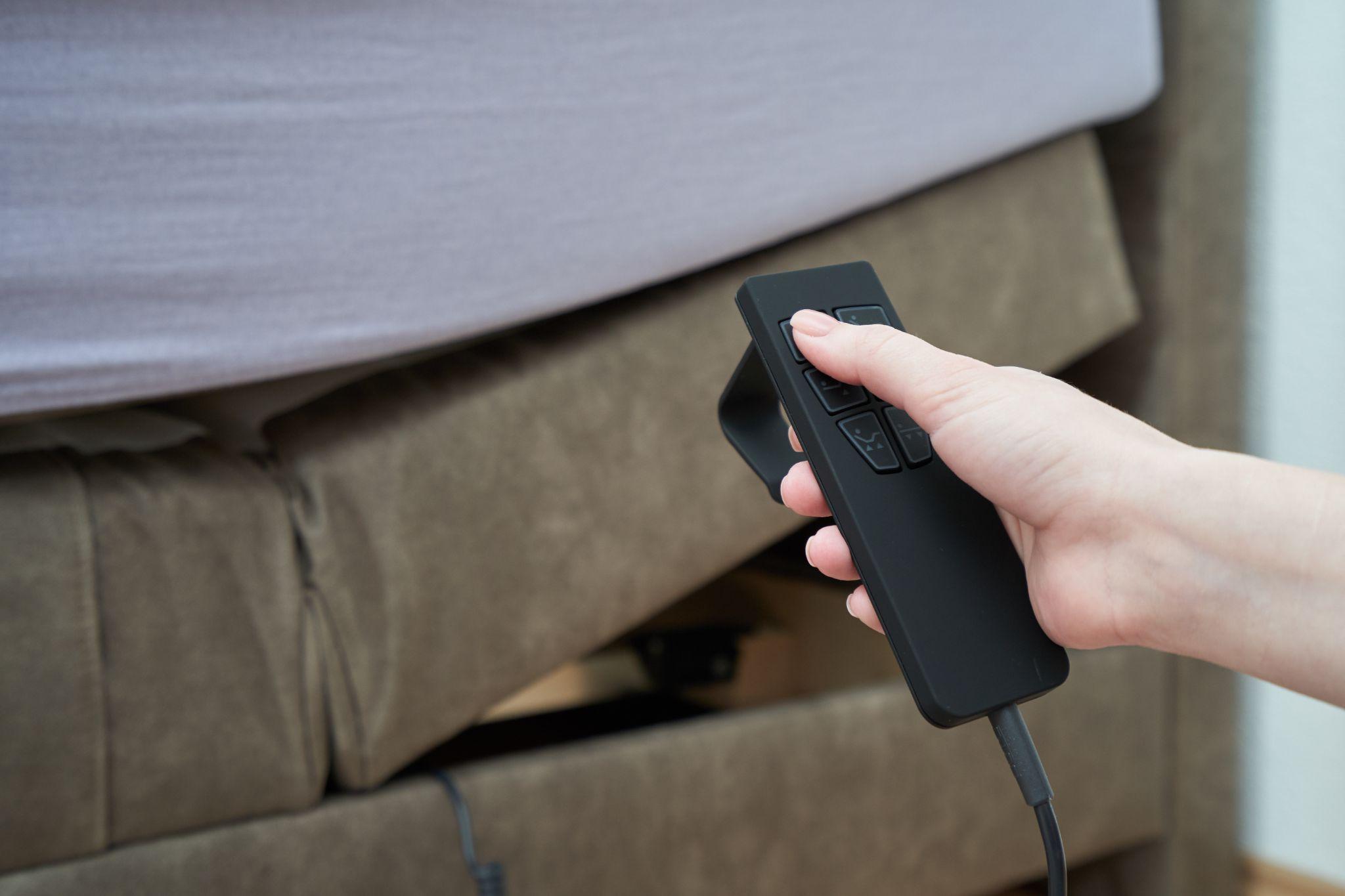
The Benefits of Buying an Adjustable Bed

Some people have a hard time getting plenty of restful sleep and a good night’s sleep. One common cause for this is that they are not sleeping in the best position and have difficulty getting comfortable. One potential solution for this issue is to get an adjustable bed.
What Is an Adjustable Bed?
An adjustable bed is a bed where you can adjust the mattress and put it in a sleeping position that is the most comfortable for you. The head, middle, and base of the mattress can be adjusted using a remote control. Some adjustable beds also feature heating and cooling options, so you can stay warm or cool depending on the time of the year.
What Are the Benefits of Adjustable Beds?
#1. Helps Relieve Pain
If you have shoulder pain, back pain, or leg pain, you can adjust the bed to help take pressure off the area that hurts. Therefore, you can be more comfortable to help you sleep more deeply. Additionally, if you recently had surgery or are recovering from an accident, you can still find a comfortable position to help you sleep.
#2. Zero Gravity Sleeping
While you won’t be floating in space, you can adjust the bed into a zero gravity position. This position is the most comfortable and ideal for sleeping. You will notice you fall asleep faster, stay asleep longer, and experience better sleep quality.
#3. Individual Adjustments for Each Side of the Bed
Couples do not have to worry about being stuck in a sleeping position the other person has selected. Instead, each person has their own remote control that allows them to adjust their side of the bed to their desired position.
#4. Great for People Who Snore

You can toss out those snore strips when you buy an adjustable bed for snoring. Snoring occurs when there is pressure on the nasal passages and throat. Elevating your head alleviates that pressure, which stops snoring and keeps your nasal passages open.
#5. Improves Circulation
When you elevate your legs and head, blood flow is improved throughout the body. You also reduce pressure on the joints and back, so you sleep more comfortably and soundly.
#6. Great for People with Mobility Issues
People with mobility issues find it much easier to get into and out of an adjustable bed compared to a traditional bed. They can raise the head of the bed and lower the base to make it easier to stand up or transfer to a wheelchair when getting out of bed. By leaving the bed in this position, it also makes it much easier to get into bed at night.
#7. Helps Combat Insomnia
If you suffer from insomnia, you will notice an adjustable bed is the perfect holistic and drug-free way to fall asleep faster and remain asleep longer. The zero-gravity position will also help immensely with insomnia.
#8. Great for People with Sleep Apnea

Keeping your head elevated at night while using a CPAP mask can be difficult with a traditional bed. With an adjustable bed, you can elevate the top of the bed to keep your head at the ideal level so you can sleep more comfortably.
#9. Great for People with GERD
If you suffer from acid reflux or GERD, or have bouts of heartburn after eating spicy foods, an adjustable bed is a great investment. You can elevate your upper body to take pressure off your stomach and stop the acid from flowing back up the esophagus and the discomfort you experience.
#10. Reduces Leg Swelling
If you have problems with leg swelling, it is easier to elevate your legs at night with an adjustable bed. Keeping your legs elevated throughout the night allows fluids to flow easier and not remain in the legs.
As you can see, there are many benefits to purchasing an adjustable bed. Most importantly, it is essential to know the different features and options available with different models to ensure you get the benefits you desire.
Replacement Remotes for Adjustable Beds
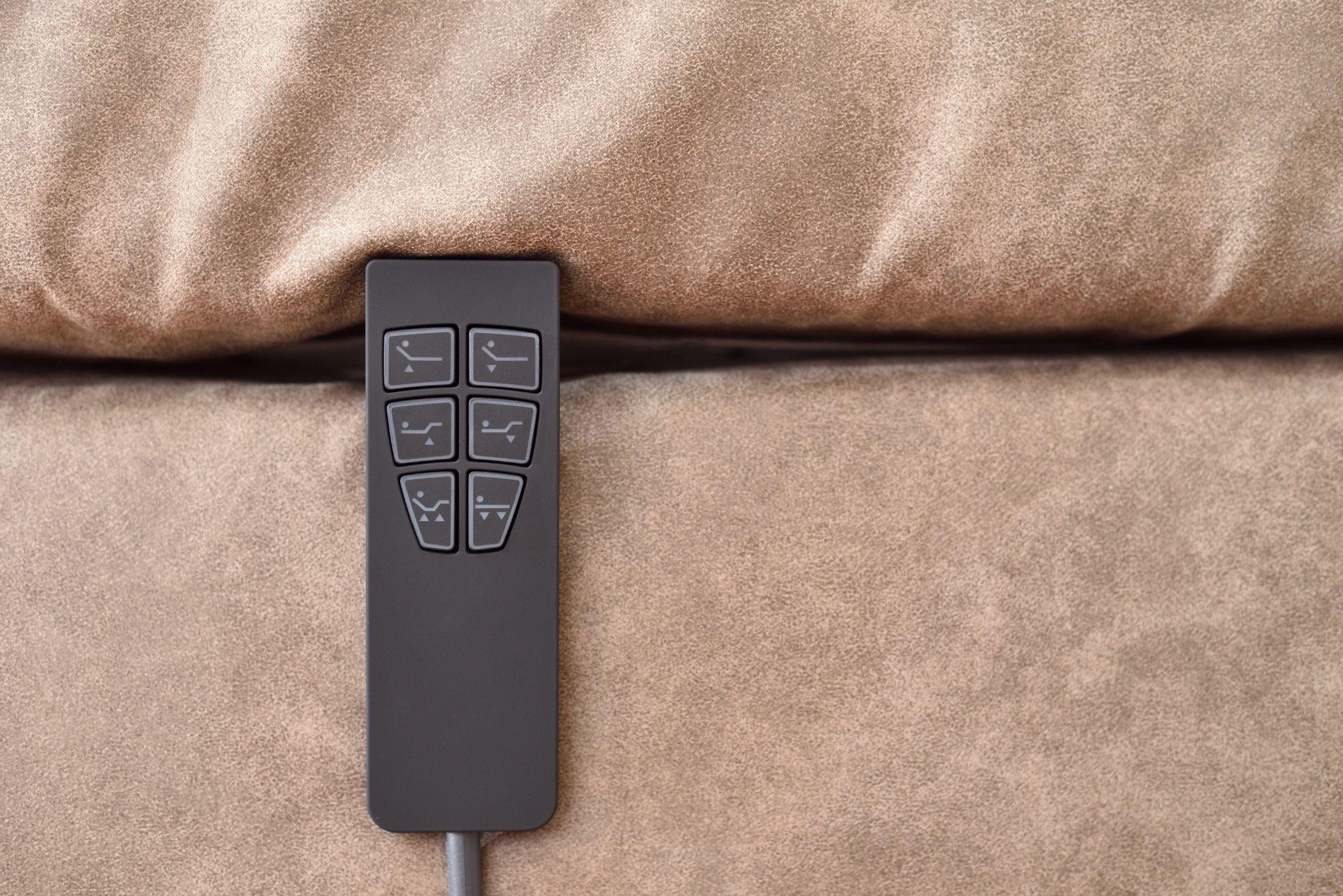
If you have misplaced, lost, or broken your remote control for your adjustable bed, it is easy to find a new one at Replacement Remotes. Explore our online store or call 855-573-6683 for further assistance today.

Why You Should Choose a Mini-Split over a Traditional AC Unit

You have a few options when you need to replace your air conditioner. You could choose a traditional AC unit or a mini-split system. Both options will help keep your home cool, but you need to consider some key differences between the two systems.
What Is a Mini-Split?
A mini-split is an air conditioner that does not require any ductwork. It also does not have to be placed in a window. Instead, it is usually installed up high on a wall, allowing the unit to fully cool the entire room.
A system consists of an outdoor condenser unit connected to individual indoor units in each room inside the house. For example, you would have one indoor unit in the living room, one unit per bedroom, and one unit anywhere else in the home you wanted to cool. These are all connected to the outdoor condenser unit.
What Is a Traditional AC Unit?

A traditional AC unit has a single outdoor unit connected to duct work to cool the entire home. The outdoor unit can be a single system that also heats or is connected to a furnace located inside the house. As such, this type of setup is commonly referred to as central heating and cooling.
How Does a Mini-Split Work?
A ductless mini-split works similarly to a heat pump. However, there is no ductwork required. Instead, the system consists of three components—the indoor unit, the outdoor unit, and coolant lines that connect the indoor unit with the outdoor unit. When you have multiple indoor units in the house, each one will have coolant lines connected to the single outdoor unit.
When the indoor unit turns on, it draws coolant from the outdoor unit and passes it through cooling coils. As the warm air passes over the cooling coils, it becomes colder and is recirculated back into the room.
Next, the coolant is returned to the outdoor unit, where heat is released. The cooled coolant is then drawn back into the indoor unit. This process continues until the desired temperature for the room is reached.
How Does a Traditional Air Conditioner Work?
A traditional air conditioner is controlled by a central thermostat located in the house. When the indoor temperature gets warmer than the preset temperature, it signals the outdoor unit to turn on. The AC forces cooled air into the home through ductwork that blows out of register vents in every room in the house.
As warm air is returned to the outdoor unit via a return air duct, it cools the air by blowing it over cooling coils filled with coolant. Then it returns the cooled air indoors. The process continues until the desired indoor temperature is reached.
How Is a Ductless Mini Split System Different?
The key difference between a ductless mini split system and a traditional air conditioner is there are individual mini split units in each room you want to cool. Instead of a single system cooling your home to the same temperature, you can set individual temperatures for each room with a mini split system.
So, during the day when you are not using your bedrooms, you can turn the temperature up to save on electricity while keeping the living room, dining room, or kitchen cooler. Mini split systems are also more energy efficient because you can individually control the temperatures in each room.
Other Benefits of Mini Split Systems
Easier to Repair and Replace
Unlike a traditional air conditioner, where your home cannot be cooled if there is a problem with the outdoor unit, mini split systems operate independently. So, if one unit in one room is having an issue, the other units will continue to cool the rooms where they are installed.
Additionally, if you need to replace an indoor unit, you only have to replace the defective one, whereas with a regular AC unit you have to replace the outdoor unit, which is more expensive than a single indoor unit.
Provides a Single System for Cooling and Heating

Another benefit you gain with mini split cooling systems is the added benefit of heating in the winter. You do not need a separate furnace to heat your home. Since the system functions similarly to a heat pump, it is fully capable of cooling and heating.
More Precise Temperature Control
The ability to control temperatures in each room provides more precision heating or cooling compared to a traditional heating and cooling system. For example, with a traditional system, you may have some rooms that are always warmer or colder than others. With a mini split, each room is heated or cooled to the precise temperature set on the unit.
Not Any Louder Than a Traditional System
Most of the sound the system makes will come from the outdoor unit. As a result, mini splits operate almost silently. Some units have a “silent mode” option to make the blower fan even quieter.
Better Indoor Air Quality
With a traditional air conditioner system, the only filtration occurs through a single filter at the return air duct. While some systems have a secondary filter, it still does not remove every impurity from indoor air.
On the other hand, each mini-split unit has its own air filter. Since the air in each room is filtered by a single unit, more impurities are removed from indoor air. Therefore, your indoor air quality is much improved.
Has the Best SEER Ratings

SEER ratings have to do with the energy efficiency of cooling systems. Traditional AC systems typically range between 15 and 20. In comparison, mini-splits have SEER ratings that start in the 20s and go into the 30s.
Easy to Control with a Universal Remote Control
No matter how many mini split units are installed in your home, you can control the settings on each unit using a single, universal remote control.
Replacement Remotes for Your Mini Split Units
When you need a new universal remote control for your mini split units or replacement remotes for other electronic devices in your home, you can find the remotes you need at Replacement Remotes. Shop our online store today or contact us at 855-573-6683 for further assistance.

Garage Door Opener Not Working?
Here Are 5 Signs It Needs Replacing
We rely on our garage door openers to automatically open and close the garage door with a press of a button. Yet, like all technology and home automation appliances, things can and do go wrong. To help you determine what to do when your garage door opener is not working correctly, check out these five common problems that could indicate it needs replacing.
Garage Door Will Not Open or Close
There can be several reasons why the door is not opening or closing. You should start by checking to see if the door will work if you press the button in the garage.
If it does not, then you should replace the batteries in the garage door remote. After replacing the batteries, if the garage door remote still does not work, you will need to order a replacement remote control.
If you hear the opener’s motor engage when pressing the button, the door is most likely not connected to the opener. Reconnect the emergency release to the opener.
Garage Door Stops When Opening
Suppose the garage door stops when opening. The problem could be as easy to fix as lubricating the door’s tracks. If that doesn’t fix the problem, you should schedule a service appointment with a garage door technician to check the springs, as they may need replacing.
Garage Door Stops and Reverses Direction
If the garage door stops when opening or closing and reverses direction, this often indicates something is blocking the door sensors. If you look down near the garage floor at the sides of the garage door frame, you should notice a sensor on each side of the garage.
If there is an obstruction on either side of the door, the built-in safety features will cause the door to stop and reverse direction. If there is no obstruction, clean the lenses on the sensors, as they can get dusty and dirty.
Garage Door Opener Works Periodically
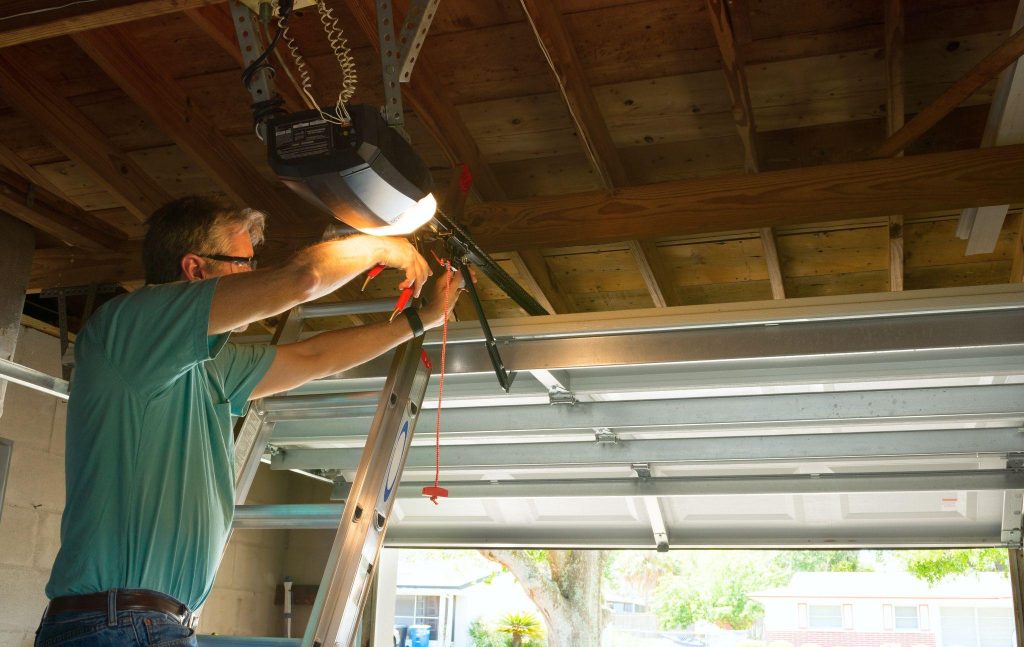
Suppose the door is unreliable and only works periodically or unexpectedly on its own. In that case, you could have a wiring issue or a communication problem between the remote control and the door opener.
If the problem only occurs when using the remote controls, you may need to change the opener and remotes to a new frequency. Otherwise, contact a garage door technician to troubleshoot wiring issues.
Garage Door Struggles to Open or Close
This problem can occur if the springs are getting ready to snap and break. It is dangerous to attempt to check the springs yourself and best left to a garage door technician.
Garage door openers also wear out eventually and do need to be replaced. If your opener is more than ten years old and struggles to open or close, it could simply be time to get a new one.
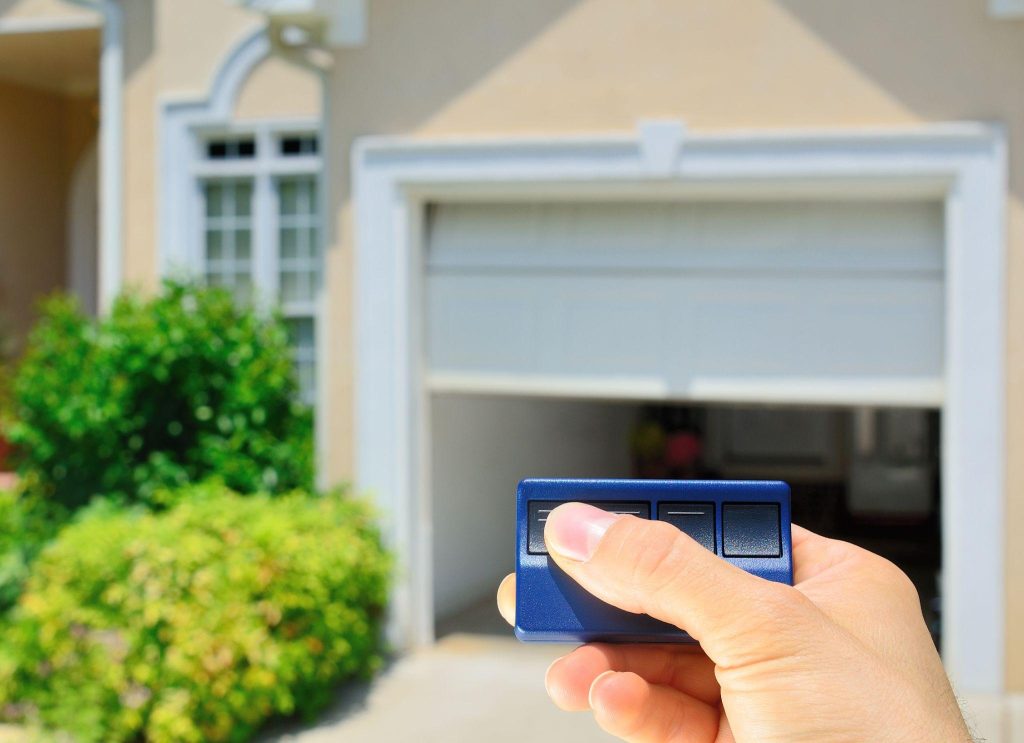
Other signs of aging to watch for include:
- Moving Slowing
- Jerking Motions
- Emergency Release Frequently Detaches
- Door Bangs When Closing
- The Opener Is Very Loud or Make Strange Sounds
Where to Find Replacement Garage Door Remotes
When you need a new garage door remote, it is easy to find the model you need at Replacement Remotes. Explore our selections in our online store or contact us at 855-579-6683 for further assistance today.